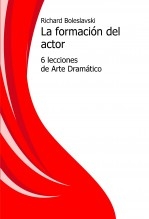La formación del actor

Bolesław Ryszard Srzednicki was born on February 4, 1889 in Dębowa Góra, in tsarist Russia-ruled Poland. He graduated from the Tver Cavalry Officers School. Later, he studied acting at the Moscow Art Theatre, became a Member of M.A.T. and the director of its First Studio.
During World War I, Bolesławski fought as a cavalry lieutenant on the tsarist Russian side until the fall of the Russian Empire. He left Russia after the October Revolution of 1917 for his native Poland, where he directed his first movies. As his birth name was difficult to pronounce, even for Poles, he took the name Ryszard Bolesławski. His Cud nad Wisłą (Miracle at the Vistula) was a semi-documentary about themiraculous victory of the Poles at the Vistula River over the much stronger Soviet Russian forces during the Polish-Soviet War of 1919-1921.
Bolesławski was married at least three times and had a son - Jan - with last his wife, Norma.
In 1922, Bolesławski acted in Die Gezeichneten, a German silent film directed by Danish director Carl Theodor Dreyer. In the 1920s, Bolesławski made his way to New York City, where, now known as "Richard" (the English spelling of his name), along with fellow émigré Maria Ouspenskaya, he began to teach what would become known as Method acting. In 1923, he founded the American Laboratory [Stage] Theatre in New York. Among his students were Lee Strasberg, Stella Adler and Harold Clurman, founding members of The Group Theater(1931-1940), the first American acting ensemble to put Stanislavski's theories into practice. Offered a contract to direct Hollywood films, he made several significant productions with some of the major stars of the day until his death a few weeks short of his 48th birthday, on January 17, 1937. He is interred in the Calvary Cemetery, East Los Angeles.
For his contribution to the motion picture industry, Ryszard Bolesławski has a star on the Hollywood Walk of Fame at 7021 Hollywood Blvd. ((Wiki)
